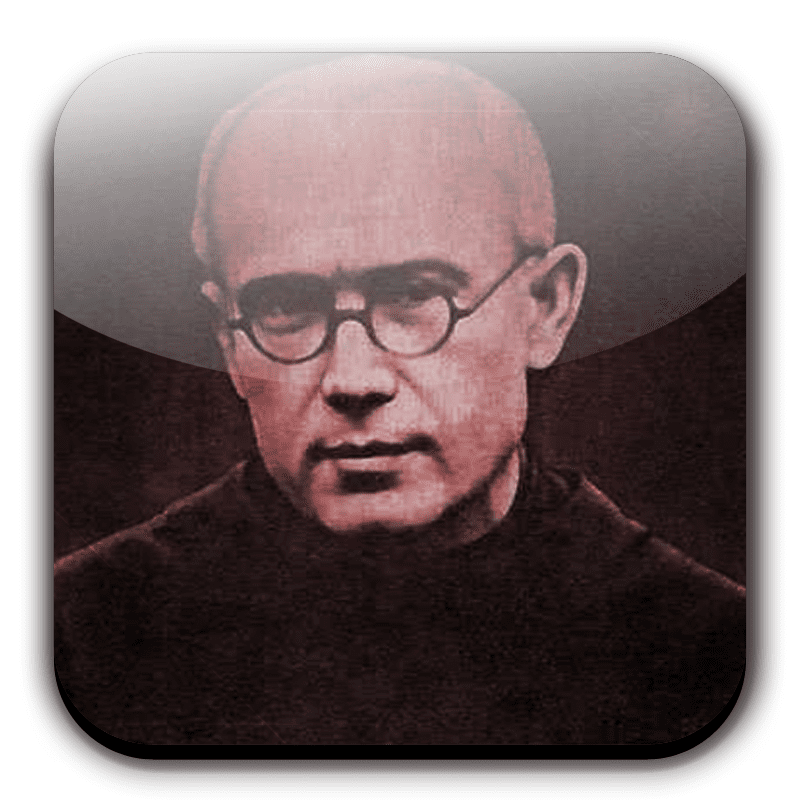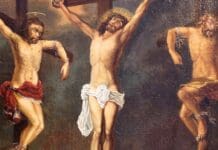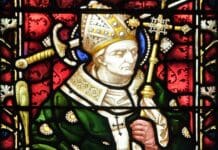Saint Maximilian Kolbe (January 8, 1894–August 14, 1941), also known as Maksymilian or Massimiliano Maria Kolbe and “Apostle of Consecration to Mary,” born as Rajmund Kolbe, was a Polish Conventual Franciscan friar who volunteered to die in place of a stranger in the Nazi concentration camp of Auschwitz in Poland.
Kolbe, the son of a Polish family with partial German origin, was born in 1894 in Zduńska Wola, at that time part of Russian Empire, as the second son of Juliusz Kolbe and Marianna Kolbe (née Dąbrowska). His parents moved to Pabianice, where they worked first as weavers, then ran a bookstore. Later, in 1914, his father joined Józef Piłsudski’s Polish Legions and was captured by the Russians for fighting for the independence of a partitioned Poland.
In 1907, Kolbe and his elder brother Franciszek decided to join the Conventual Franciscan Order. They illegally crossed the border between Russia and Austria-Hungary and joined the Conventual Franciscan junior seminary in Lwów. In 1910, Kolbe was allowed to enter the novitiate. He professed his first vows in 1911, adopting the name Maximilian, and the final vows in 1914, in Rome, adopting the names Maximilian Maria, to show his veneration of the Blessed Virgin Mary.
In 1912, he was sent to Kraków, and, in the same year, to Rome, where he studied philosophy, theology, mathematics, and physics. He took a great interest in astrophysics and the prospect of space flight. While in Rome he designed an airplane-like spacecraft, similar in concept to the eventual space shuttle, and attempted to patent it. He earned a doctorate in philosophy in 1915 at the Pontifical Gregorian University, and the doctorate in theology in 1919 at the Pontifical University of St. Bonaventure. During his time as a student, he witnessed vehement demonstrations against Popes St. Pius X and Benedict XV by the Freemasons in Rome and was inspired to organize the Militia Immaculata, or Army of Mary, to work for conversion of sinners and the enemies of the Catholic Church through the intercession of the Virgin Mary. In 1918, he was ordained a priest. In the conservative publications of the Militia Immaculatae, he particularly condemned Freemasonry, Communism, Zionism, Capitalism and Imperialism.
In 1919, he returned to the newly independent Poland, where he was very active in promoting the veneration of the Immaculate Virgin Mary, founding and supervising the monastery of Niepokalanów near Warsaw, a seminary, a radio station, and several other organizations and publications. Between 1930 and 1936, he took a series of missions to Japan, where he founded a monastery at the outskirts of Nagasaki, a Japanese paper, and a seminary. The monastery he founded remains prominent in the Roman Catholic Church in Japan. Kolbe decided to build the monastery on a mountain side that, according to Shinto beliefs, was not the side best suited to be in tune with nature. When the atomic bomb struck Nagasaki, Kolbe’s monastery was saved because the blast of the bomb hit the side of the mountain that the monastery was not located on, the said side took the main blow of the blast. Had Kolbe built the monastery on the side of mountain he was advised to choose, his work and all of his fellow monks would have been destroyed.
During the Second World War, in the friary, Kolbe provided shelter to refugees from Greater Poland, including 2,000 Jews whom he hid from Nazi persecution in his friary in Niepokalanów. He was also active as a radio amateur, with Polish call letters SP3RN, vilifying Nazi activities through his reports.
On February 17, 1941, he was arrested by the German Gestapo and imprisoned in the Pawiak prison, and, on May 25, was transferred to Auschwitz I as prisoner #16670.
In July 1941, a man from Kolbe’s barracks had vanished, prompting SS-Hauptsturmführer Karl Fritzsch, the Lagerführer (i.e., the camp commander), to pick 10 men from the same barracks to be starved to death in Block 11 (notorious for torture), in order to deter further escape attempts. (The man who had disappeared was later found drowned in the camp latrine.) One of the selected men, Franciszek Gajowniczek, cried out, lamenting his family, and Kolbe volunteered to take his place.
During the time in the cell, he led the men in songs and prayer. After three weeks of dehydration and starvation, only Kolbe was still alive. Finally he was executed with an injection of carbolic acid.
Kolbe is one of ten 20th-century martyrs from across the world who are depicted in statues above the Great West Door of Westminster Abbey, London. He was canonized by Pope John Paul II on 10 October 1982, in the presence of Gajowniczek.


















I really like this weblog its an authority contentment ! Glad When i observed this online .